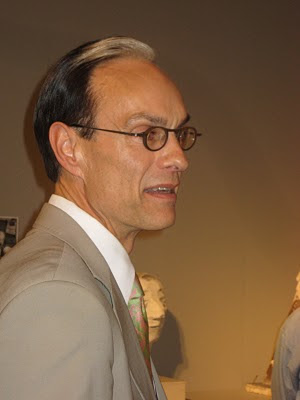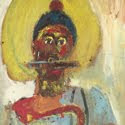
I’ve been involved in publishing for so long that I actually witnessed the decline of hot type. Forty years ago my first job in the field was as a typesetter at small typography studio in New York. Giant-sized computers with complicated keyboards were just supplanting the manual labor of letter-by-letter composition, but even so, typos still had to be sliced out by hand with a razor and corrections pasted with wax into final galleys. For the time, however, this was cutting edge technology. I felt like a pioneer, a path finding participant in the world of publishing evolution.
My typesetting career led to a job as a paste-up artist which led to layout which led to graphic design which led to photo styling, and eventually art directing. Simultaneously, I was working as a freelance writer which led to a long career as an author, editor, photo editor, and book packager. Now, I’m about to launch my own publishing list (Blue Hair Lady Publishing), write and illustrate a novella, and find a new agent while continuing to teach my online course Radical Writing. In other words, I’m path finding in a new publishing landscape…again. What I recognize this time, however, is that the present change in technology is merely the tip of the evolutionary iceberg. With e-books, blogs and social networking, creativity and information-sharing inhabit an entirely new cosmos, for, along with the vast transformation of technology is sea change of values. Books, once the literary prize of the educated elite, are no longer the “object” of the long process of intense creative labor. Rather, they are now regarded in much of the commercial world as the premium, the give-away, the prize that comes along with (that crass word) “the brand.”
After much investigation and trial, I’ve now come to believe that neither established publishers, editors, nor agents and not even the new world marketing gurus really know where word-and-picture media are headed. Certainly, the printed word will not entirely vanish. But it’s place in the world – and publishing’s place within that place – have yet to be determined.
At a writers conference I recently attended in NYC, a panel of literary agents explained the types of material their agencies were receptive to. Professionals though they were, the panel members looked like deer caught in the headlights. It became clear to me that given the vast changes in the publishing game, even they didn’t know what truthfully to advise their audience of aspiring authors. I came away feeling lucky that, as an artist and writer, I’m no stranger to “making up the process as I go along.” This, I realized, is exactly what is required to enter the publishing arena today.
A following or “platform” is now the product. Publishers and agents look for name/product recognition as much as for talent or idea. Success in publishing (and especially self-publishing) now requires great competence and involvement in internet marketing and self-promotion. Publishing houses traditionally give books no longer than six weeks of marketing focus (the time leading up to and immediately following the publication date). Now, before, during, and after that period, the author is expected to promote, promote, promote. Publishing has become more than ever an endeavor of personal responsibility.
My friend, the cookbook author Grace Young, has published three beautiful books with Simon & Schuster over the last ten years. (The Wisdom of the Chinese Kitchen, the Breath of a Wok, Stir-frying to the Sky’s Edge). Leading up to last spring’s publication of Sky’s Edge, her editor and publicist had left their positions. On the last day of her book tour, she received a Tweet that the company’s publisher had been outsed. Since then she has also lost her replacement editor. Grace’s experience makes the message pretty clear – if you want to get your book out into the world, the development and promotional heavy lifting now falls to you.
I’ve been observing the author Julie Klam on Twitter as she stirs the pot for her just-released book on rescue dogs, You Had Me At Woof. She and her coterie of writer friends and girl friends have been putting out the word all over the social media for weeks and months. They made a tongue-in-cheek “training” video for YouTube exposure, cheered on Julie’s book signing appearances in enthusiastic tweets, and hailed her every mention in print through various networks. The constant mention and sight of Julie’s name made me want to rescue another dog, have lunch with all the girlfriends, talk until dusk, and buy the book! The personal promotional efforts make me feel not simply like I know Julie Klam, but that we’re BFFs.
Like every passionate idea brought to fruition, we must still conceive, believe, and apply heart, soul, creativity, and talent. To achieve commercial success in publishing, we must also now apply marketing skill, analytical skill, social skills, and a lot of perseverance.
A WORD ABOUT e-BOOKS
What’s most difficult for people to grasp about electronic publishing is that e-books are NOT books. The book designer Joel Friedlander consistently illuminates his learning about e-publishing, and I highly recommend his website and blog, http://www.thebookdesigner.com. This is how he describes the distinctions print and electronic books:
E-books have no pages. Pages, the two sides of the leaves of paper that make up the book, are intrinsic to printed books. Although e-books imitate “pages” it’s just for our convenience. There is no reason an entire novel in e-book form couldn’t be written on one “page” or on thousands of bits of displayed text within a programmed environment.
E-books also have no spreads. Although it seems like I’m repeating myself, this is the heart of the book. When the sheaves of papyrus or linen or wood pulp paper are bound they naturally create two (or more) side-by-side pages, or a spread. What makes a book is the binding, so the spread is really the basic unit of the book, not the page.
Every word in an e-book is equidistant from every other word in the e-book. Any location in the e-book can be connected instantly to any other location in the text through hyperlinks.
The text of an e-book is searchable and subject to computer analysis. Just by entering a search term and hitting the Return key, you can highlight thousands of occurrences of the term throughout the entire text. Instantly.
There is no need in an e-book for text to be linear. An e-book, like almost all text-delivery systems, presents text in orderly rows of type on discrete, sequential pages, but this has nothing to do with the form of the e-book and everything to do with habits and expectations. We are used to reading text that way, so designers have created a model of the book on the screen. With just a little more work they could and do create models that have no debt to the book, where text is free-form, or timed to appear at intervals, or integrated with other media, or reading in circles if they bloody well want it to.
The form, size and typography of the e-book are adjusted by the devices on which they are presented. I have hanging over my desk a page from a religious text printed in Paris in 1495 by a printer named Ulrich Gering, and I have no doubt that Ulrich himself set up this page and printed it on his pull-lever press. With many e-books, the user can change the typeface, the typesize and other attributes. The e-reader itself will create the format for the pages and how they are displayed.
ADVENTURES IN SELF-PUBLISHING
For artists and writers particularly, the promise of self-publishing is infinite. For people like me with experience in all facets of the field, this is the moment we’ve been waiting for -- books over which we have design, production, and promotional power. For artists and writers in general, self-publishing provides the means to bring a book idea into material fruitionby ourselves. A great satisfaction.
A great example of a purely self-published project is a delightful book I learned about on the internet that was produced by a photographer/designer/ illustrator team in the UK, Gerry King and Louise Burston, who formed a company called Zero Lubin to produce and market their art and books. Gerry King’s Lubin Tales draws us in “a world of small town debauchery and intercontinental dubious intent.” Take a look at http://www.zerolubin.wordpress.com and www.zerolubin.org. Everything about their effort is distinctive, edgy, whimsical, and highly professional. And they are very responsive to personal inquiry.
In regard to self-publishing through a POD (print-on-demand) company, I advise that you be certain you are retaining rights to your material. Do your research or contact a literary attorney (I can recommend an excellent one). Here’s an excellent summary of rights licensing and a list of helpful resources: http://ht.ly/35WAH
Once you’ve published, work hard at those Facebook, Twitter, other social network connections, and keep your blog current. All this takes time, but it is now The Work. I’ve yet to discover how much effective traffic these media genuinely generate, but I continue under the belief that any connection could provide the link to the next big step. You just never know.
The following article provides some insight as to how Facebook functions – it’s interesting, and worth reading, but the actual method it describes is way too dense for me. Instead, I put out, and put out, and put out as intelligently and pervasively and discriminatingly as I can, and then I pray for the best. http://www.thedailybeast.com/blogs-and-stories/2010-10-18/the-facebook-news-feed-how-it-works-the-10-biggest-secrets/
Remember also to investigate avenues of free mention (online publications in your field) and advertising. I started with Google Adwords and with classifieds in my fields’ association media.
In conclusion, this is what I’ve learned so far about publishing today and in the near future: The internet has given us the power to grow exponentially, to function simultaneously and democratically (so far), to generate limitless connection. And, as in life and art and nature, it welcomes serendipity. The internet is a malleable medium, and for those who use it creatively, the future is now and it’s in our hands.



















